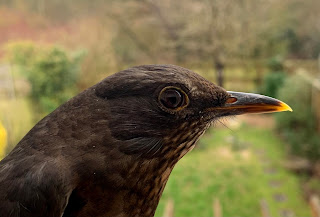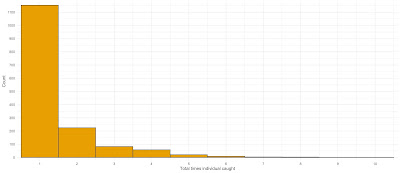Another year of monitoring at Charter Wood is over. This 35-acre wood on the western outskirts of Norwich was planted in 1994 and is managed by the Norwich Fringe Project. The wood is flanked by horse pasture and a 50-acre arable field that has been left fallow over the last year. Ecological consultants were out surveying the area recently, and it turns out the arable field is earmarked for yet more houses. Disaster for the breeding Skylark and wintering population of Woodcock, not to mention the increased disturbance in the woodland itself. When it’s your patch the losses are felt more keenly, yet it’s easy to forget the spot our house (built in 2003) stands upon was once home to breeding Turtle Dove and Nightingale, both now gone from the local landscape.
Putting that aside, it’s safe to say when I wrote the blog a year ago, I would not have imagined the year that was to follow. Thankfully a lion’s share of the monitoring we do is from our garden which backs onto the woodland, so even through lockdown we were lucky enough to continue our ringing activities here. The arable field, however, has become very weedy and has made our lamping work much more difficult there resulting in a poor season (we also couldn’t visit through much of lockdown).
Ringing effort comes predominantly from a single 18-metre mist net starting at our back fence leading into the woodland. With additional nets sometimes used in the garden, and around Charter Wood/the horse pasture for targeted catching (e.g. for Meadow Pipits). Supplementary feeding was supplied year-round but was greatly reduced during summer. We also did some dazzling in the arable field.
 Map of the Charter Wood area
Map of the Charter Wood areaCharter Wood and the garden by the numbers.
Between March 31st 2020 and March 31st 2021, we ringed a total of 1323 birds across 33 species within the Charter Wood area and encountered 1559 unique individuals. The number ringed is a bit down on last year, but as last year was the first year of ringing here that’s not too surprising. Unsurprisingly with feeder-based ringing, Tits dominated the catch once again with Blue and Great Tits making up 47% of the total birds ringed. However, our finch numbers also seem healthy, particularly Greenfinch (193 unique inds.), Chaffinch (173 unique inds.), and Goldfinches (103 unique inds.).
There are a bunch more detailed graphs at the end of the blog of what we have found for those of us that enjoy a graph or two.
Table: Birds ringed in Charter wood, Species in bold were new for the site. Treat percentage changes with care, effort isn't standardised.
| Species | New | Retraps | Total | Unique inds.
2020–21 | Change
(unique) | Unique inds.
2019-20 |
|---|
| Blue Tit | 448 | 455 | 903 | 540 | up 15% | 472 |
| Great Tit | 145 | 273 | 418 | 202 | down 33% | 302 |
| Greenfinch | 175 | 34 | 209 | 193 | up 16% | 167 |
| Chaffinch | 154 | 52 | 206 | 173 | up 16% | 149 |
| Blackbird | 62 | 39 | 101 | 77 | down 25% | 102 |
| Goldfinch | 97 | 13 | 110 | 103 | up 18% | 87 |
| Dunnock | 37 | 42 | 79 | 47 | down 18% | 57 |
| Robin | 38 | 40 | 78 | 47 | down 13% | 54 |
| Long-tailed Tit | 22 | 29 | 51 | 29 | down 31% | 42 |
| Blackcap | 23 | 1 | 24 | 23 | up 92% | 12 |
| Brambling | 21 | 0 | 21 | 21 | up 525% | 4 |
| House Sparrow | 19 | 0 | 19 | 19 | n/a | 0 |
| Meadow Pipit | 13 | 0 | 13 | 13 | n/a | 0 |
| Chiffchaff | 8 | 5 | 13 | 9 | down 36% | 14 |
| Wren | 7 | 3 | 10 | 8 | down 20% | 10 |
| Skylark | 9 | 0 | 9 | 9 | down 40% | 15 |
Great Spotted
Woodpecker | 5 | 4 | 9 | 5 | down 38% | 8 |
| Goldcrest | 8 | 0 | 8 | 8 | no change | 8 |
| Bullfinch | 5 | 2 | 7 | 6 | no change | 6 |
| Woodpigeon | 4 | 0 | 4 | 4 | down 73% | 15 |
| Collared Dove | 3 | 0 | 3 | 3 | down 82% | 26 |
| Jay | 3 | 0 | 3 | 3 | down 80% | 15 |
| Song Thrush | 3 | 0 | 3 | 3 | up 50% | 2 |
| Siskin | 3 | 0 | 3 | 3 | n/a | 0 |
| Marsh Tit | 2 | 0 | 2 | 2 | n/a | 0 |
| Lesser Redpoll | 2 | 0 | 2 | 2 | n/a | 0 |
| Coal Tit | 2 | 0 | 2 | 2 | down 82% | 11 |
| Treecreeper | 2 | 0 | 2 | 2 | no change | 2 |
| Woodcock | 1 | 0 | 1 | 1 | down 89% | 9 |
| Sparrowhawk | 1 | 0 | 1 | 1 | down 50% | 2 |
| Fieldfare | 1 | 0 | 1 | 1 | n/a | 0 |
| Redwing | 1 | 0 | 0 | 1 | no change | 1 |
| Lapwing | 0 | 0 | 0 | 0 | down 100% | 1 |
| Starling | 0 | 0 | 0 | 0 | down 100% | 1 |
| Reed Bunting | 0 | 0 | 0 | 0 | down 100% | 2 |
| Stock Dove | 0 | 0 | 0 | 0 | down 100% | 2 |
| Magpie | 0 | 0 | 0 | 0 | down 100% | 2 |
Green
Woodpecker | 0 | 0 | 0 | 0 | down 100% | 1 |
| Total | 1323 | 992 | 2315 | 1559 | down 3% | 1601 |
Highlights:
- 6 new species ringed for the site this year.
- Use of some trap types such as potters and maze traps was reduced this year, and combined with a mast year for acorns in the area saw our catch of species such as Jay reduce substantially.
- The wintering flock of Greenfinch held strong for another year, and probably saw a small increase in numbers (~250–300 in the wood). No sign of Trichomoniasis is also hugely encouraging.
- A surprising drop in Great Tit numbers, with unique indivduals down 33% (100 less inds.). I'm yet to come up with a decent explanation for this.
- Chaffinch numbers were strong and we saw a bigger passage of birds than previous years. A Norwegian ringed bird being one of the highlights of the year.
- During the Chaffinch passage we also saw a fantastic passage of Brambling, with a very surprising 21 ringed. Well up on the 4 last year. We also got our first Redpoll and Siskin ringed, both being surprisingly infrequent passage visitors to the woodland.
Male Brambling
- The heavy snow in February brought Fieldfare to the garden, and with one ringed it was probably the surprise capture of the year.
Fieldfare
- Charter Wood doesn’t attract large numbers of warblers in general, and this is reflected in the relatively modest numbers of Chiffchaffs and Blackcaps that we ring annually. This year saw a better passage of Blackcaps, but Chiffchaff numbers were slightly down.
- We had 7 controls (ringed by someone else) of birds in the last year. The best two being a Norwegian Chaffinch and a Dutch Blackbird. The rest (2 Blue Tits, 2 Greenfinches, and a Bullfinch came from within Norfolk).
Dutch Blackbird (top) and Norwegian Chaffinch (bottom)
- We had another 3 birds reported as killed by local cats, this is more than likely an undercount of the true number.
Charter Wood nest box scheme
Our nest box scheme got off to a good start in 2020, with lockdown restriction lifting just in time to allow us to ring the chicks. Chicks ringed were included in counts of new in the above table, but overall, we ringed 268 Blue and Great Tits from 33 nests.
Here’s an overview of the project results:
We recently made repairs for the Great Spotted Woodpecker and Grey Squirrel damage to boxes (17 boxes were damaged through the winter), and we put hole guards on those boxes to help reduce future damage. Our first checks for the 2021 season are imminent, so fingers crossed for another good season.
Graphs of Charter Wood ringing
Captures by month
There are two clear peaks in captures through the year, one just after the breeding period (lots of new young birds moving about), and one in mid-Winter (birds congregating into wintering flocks and using feeders more).
Captures by month corrected
Correcting for the amount of trapping effort each month isn’t very easy when you operate varying trapping methods (some of which are passive such as maze traps). A very rough way of correcting for effort is to simply calculate number of birds caught per trapping day (where a trapping day is considered a day where at least one individual was trapped).
Species richness by month
Diversity is reasonably steady through the year
Retrap plot
Most birds don't get re-encountered, even with the large number of retraps we get at feeder sessions.

















